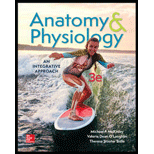
Anatomy and Physiology: An Integrative Approach with Connect Access Card
3rd Edition
ISBN: 9781260254440
Author: Michael McKinley, Valerie O'Loughlin, Theresa Bidle
Publisher: McGraw-Hill Education
expand_more
expand_more
format_list_bulleted
Question
Chapter 23.3, Problem 16LO
Summary Introduction
To list: The three types of cells found in alveoli and describe its functions.
Concept introduction: The structures of the respiratory system are also subdivided on the basis of their function such as conducting zone and respiratory zone. The three structures that participate in the exchange of gas with the blood are part of the respiratory zone, namely respiratory bronchioles, alveolar ducts, and alveoli.
Expert Solution & Answer
Want to see the full answer?
Check out a sample textbook solution
Students have asked these similar questions
What will control the rate of bioremediation of petroleum? (Choose all correct answers)
The availability of the petroleum
The temperature of the water
The availability of oxygen
The percent of the population that has degraded petroleum in the past
Which of the following would lead to a false negative result in a sandwich ELISA (the lab manual refers to this as a direct ELISA- also known as search for antigen)? Mark all correct answers.
antibody was non-specific and bound to something other than the antigen of interest.
too short of a duration when incubating the reagents in the plate.
If there are multiple strains of the pathogen of interest and the antibody does not recognize one of the strains.
Did not sample the correct bodily fluid/area to detect the antigen
concentration of antigen was too low to detect in the patient sample.
inadequate washing was performed after the enzyme linked antibody was allowed to bind.
substrate was exposed to too much light
reusing a pipette that was used to pipette a positive sample.
S.
+1269 pts
/1500
© Macmillan Learning
0
Resources
Solution
Penalized
Feedback
Try Again
Draw the final product with stereochemistry and lone pairs. The leaving group has been pre-drawn for
your convenience.
+100
+100
: 0:
+
H,C-
:0:
: 0
0 :
+100
+94
possible
✓ +100
K
Attemp
Chapter 23 Solutions
Anatomy and Physiology: An Integrative Approach with Connect Access Card
Ch. 23.1 - Prob. 1LOCh. 23.1 - Which respiratory structure is associated with the...Ch. 23.1 - Prob. 2LOCh. 23.1 - Prob. 2WDLCh. 23.1 - LEARNING OBJECTIVE
3. Describe the structure of...Ch. 23.1 - Prob. 4LOCh. 23.1 - In what ways does the epithelium of the upper...Ch. 23.2 - Prob. 5LOCh. 23.2 - Prob. 6LOCh. 23.2 - Prob. 1WDT
Ch. 23.2 - What changes occur to inhaled air as it passes...Ch. 23.2 - What is the function of nasal conchae?Ch. 23.2 - Prob. 7LOCh. 23.2 - How are the paranasal sinuses connected to the...Ch. 23.2 - Prob. 8LOCh. 23.2 - What two regions of the pharynx contain tonsils?...Ch. 23.3 - LEARNING OBJECTIVE
9. Describe the general...Ch. 23.3 - Prob. 10LOCh. 23.3 - How does the larynx assist in increasing abdominal...Ch. 23.3 - What are the three unpaired cartilages in the...Ch. 23.3 - Prob. 10WDLCh. 23.3 - Prob. 11LOCh. 23.3 - Prob. 12LOCh. 23.3 - Prob. 2WDTCh. 23.3 - What is the function of the C-shaped tracheal...Ch. 23.3 - LEARNING OBJECTIVE
13. Describe the structural...Ch. 23.3 - Prob. 14LOCh. 23.3 - What are the significant structural differences...Ch. 23.3 - Prob. 15LOCh. 23.3 - LEARNING OBJECTIVE
16. List three types of cells...Ch. 23.3 - Which of the following respiratory structures are...Ch. 23.3 - The respiratory tract can be damaged from...Ch. 23.3 - List the conducting and respiratory structures (in...Ch. 23.3 - Prob. 17LOCh. 23.3 - List, in order, the structures of the respiratory...Ch. 23.4 - Prob. 18LOCh. 23.4 - Prob. 19LOCh. 23.4 - Match the component of the ling with its air...Ch. 23.4 - Prob. 20LOCh. 23.4 - Prob. 21LOCh. 23.4 - Prob. 18WDLCh. 23.4 - Prob. 22LOCh. 23.4 - Prob. 23LOCh. 23.4 - What is the function of serous fluid within the...Ch. 23.4 - LEARNING OBJECTIVE
24. Explain the anatomic...Ch. 23.4 - Why is the intrapleural pressure normally lower...Ch. 23.5 - Prob. 25LOCh. 23.5 - Prob. 21WDLCh. 23.5 - LEARNING OBJECTIVE
26. Explain how pressure...Ch. 23.5 - Prob. 27LOCh. 23.5 - Prob. 28LOCh. 23.5 - Describe the sequence of events of quiet...Ch. 23.5 - How are larger amounts of air moved between the...Ch. 23.5 - Prob. 29LOCh. 23.5 - Prob. 30LOCh. 23.5 - LEARNING OBJECTIVE
31. Explain the different...Ch. 23.5 - Prob. 32LOCh. 23.5 - Prob. 3WDTCh. 23.5 - Prob. 24WDLCh. 23.5 - Which of the following stimuli will cause an...Ch. 23.5 - Are the skeletal muscles of breathing innervated...Ch. 23.5 - Prob. 33LOCh. 23.5 - Prob. 34LOCh. 23.5 - Prob. 4WDTCh. 23.5 - The two factors that determine airflow are the...Ch. 23.5 - Prob. 35LOCh. 23.5 - Prob. 36LOCh. 23.5 - Prob. 5WDTCh. 23.5 - A person in yoga class is encouraged to take long,...Ch. 23.5 - Prob. 37LOCh. 23.5 - Prob. 38LOCh. 23.5 - Prob. 39LOCh. 23.5 - Prob. 29WDLCh. 23.6 - Prob. 40LOCh. 23.6 - Prob. 41LOCh. 23.6 - Prob. 42LOCh. 23.6 - Given the same partial pressure for oxygen and...Ch. 23.6 - LEARNING OBJECTIVE
43. Describe alveolar gas...Ch. 23.6 - Prob. 44LOCh. 23.6 - Prob. 45LOCh. 23.6 - How do the partial pressures of oxygen and carbon...Ch. 23.6 - Prob. 32WDLCh. 23.6 - Prob. 46LOCh. 23.6 - Prob. 47LOCh. 23.6 - Prob. 6WDTCh. 23.6 - How do the partial pressures of oxygen and carbon...Ch. 23.7 - Prob. 48LOCh. 23.7 - Why is such a small percentage (about 2%) of...Ch. 23.7 - Prob. 49LOCh. 23.7 - Prob. 50LOCh. 23.7 - How is the majority of carbon dioxide transported...Ch. 23.7 - Prob. 51LOCh. 23.7 - Prob. 52LOCh. 23.7 - Prob. 7WDTCh. 23.7 - Prob. 8WDTCh. 23.7 - How does oxygen movement occur during alveolar gas...Ch. 23.7 - How does carbon dioxide movement occur during...Ch. 23.7 - Does hemoglobin saturation increase or decrease...Ch. 23.7 - How is oxygen release from hemoglobin during...Ch. 23.8 - Prob. 53LOCh. 23.8 - Prob. 54LOCh. 23.8 - How does blood PO2 and PCO2 change if an...Ch. 23.8 - Prob. 55LOCh. 23.8 - Prob. 9WDTCh. 23.8 - How does blood PO2 and PCO2 change during...Ch. 23.8 - Prob. 42WDLCh. 23 - Prob. 1DYBCh. 23 - Prob. 2DYBCh. 23 - Prob. 3DYBCh. 23 - Prob. 4DYBCh. 23 - Prob. 5DYBCh. 23 - Which areas of the brain contain the respiratory...Ch. 23 - Prob. 7DYBCh. 23 - Prob. 8DYBCh. 23 - Prob. 9DYBCh. 23 - Prob. 10DYBCh. 23 - Explain how the respiratory tract is organized...Ch. 23 - Describe the relationship of the visceral pleura,...Ch. 23 - List the four processes of respiration, in order,...Ch. 23 - Describe the muscles, volume changes, and pressure...Ch. 23 - Explain how additional air is moved during a...Ch. 23 - Describe bow quiet breathing is controlled by the...Ch. 23 - Explain alveolar and systemic gas exchange.Ch. 23 - List the two means by which oxygen is transported...Ch. 23 - Describe the relationship of PCO2 and hemoglobin...Ch. 23 - List the variables that increase the release of...Ch. 23 - Paramedics arrived at a car accident to find an...Ch. 23 - Use the following to answer questions 24....Ch. 23 - Use the following to answer questions 24....Ch. 23 - Use the following to answer questions 24....Ch. 23 - Prob. 5CALCh. 23 - Prob. 1CSLCh. 23 - The nerve to the sternocleidomastoid muscle was...Ch. 23 - Prob. 3CSL
Knowledge Booster
Learn more about
Need a deep-dive on the concept behind this application? Look no further. Learn more about this topic, biology and related others by exploring similar questions and additional content below.Similar questions
- +1269 pts /1500 © Macmillan Learning t/1188d950-dd73-11e0-9572-0800200c9a66/3045511b-267e-4a00-86ca-85dbc62ecb4e/6ac3a0c9-... a □ 出 All Bookmarks Due: Mon, May 26 Resources Solution Penalized Feedback Try Again KX Attempt 3 Draw the final product with stereochemistry and lone pairs. The leaving group has been pre-drawn for your convenience. :0: + нс H,C- :0: : 0:arrow_forwards. +1169 pts /1500 © Macmillan Learning 0 Resources Hint Submit Answer Step 3: This tertiary carbocation intermediate readily undergoes elimination with any weak base to form two possible products. + + H :0: H +94 possible 3a) Draw the minor organic product of elimination. Select Draw Templates More +100 +95 possible # C Major product + Minor product 3b) Draw the major organic product of elimination. Erase Select Draw Templates More C Erasearrow_forwardExplain the Science & Society on (with links and pictures): ---- Question down below Discuss the ethical, medical, and societal implications of using advanced genetic techniques?arrow_forward
- Explain the Disease Mechanism & Impact on (with links and pictures): What causes Leigh Syndrome and why it's so deadly. Which cellular functions, organelles (especially mitochondria), and macromolecules are involved.arrow_forwardExplain the Disease Mechanism & Impact on (with links and pictures): What's going wrong inside the cell and the effects on the human body. Describe metabolism with an emphasis on cellular respiration.arrow_forwardExplain the Disease Mechanism & Impact on (with links and pictures):arrow_forward
- Explain the Science & Society on (with links and pictures): Discuss the ethical, medical, and societal implications of using advanced genetic techniques.arrow_forward↑ LED Tt O Tt e 0 ✓ B > FLORES DIology Second Semester Review 7. Chi Square Analysis: wild dumpy male x ebony wild female F1: All wild wild F2: 142 wild wild males 52 wild ebony males 46 dumpy wild males 17 dumpy ebony males 151 wild wild females 47 wild ebony females 51 dumpy wild females 8 dumpy ebony females What pattern of inheritance is observed for body color? Autosomal recessive Autosomal dominant Sex-linked recessive Sex-linked dominant What are the genotypes of the parents in the P generation? a. XBYdd x XbXbDD b. Bbdd x bbDd c. BBdd x bbDD d. BBX Y x bbXDY How many flies in the F2 generation would you expect to express the dumpy wild phenotype? a. 289.125 b. 97 c. 96.375 d. 293arrow_forward4. This question focuses on entrainment. a. What is entrainment? b. What environmental cues are involved in entrainment, and which one is most influential? c. Why is entrainment necessary? d. Assuming that a flash of darkness is an effective zeitgeber, what impact on circadian rhythms would you expect to result from an event such as the 2024 solar eclipse (assume it was viewed from Carbondale IL, where totality occurred at about 2 pm)? Explain your reasoning. You may wish to consult this phase response diagram. Phase Shift (Hours) Delay Zone Advance Zone Dawn Mid-day Dusk Night Dawn Time of Light Stimulus e. Finally, give a real-world example of how knowledge of circadian rhythms and entrainment has implications for human health and wellbeing or conservation biology. This example could be from your reading or from things discussed in class.arrow_forward
- Generate one question that requires a Punnet Squre to solve the question. Then show how you calculate the possibilities of genotype and phenotypearrow_forwardBriefly state the physical meaning of the electrocapillary equation (Lippman equation).arrow_forwardExplain in a small summary how: What genetic information can be obtained from a Punnet square? What genetic information cannot be determined from a Punnet square? Why might a Punnet Square be beneficial to understanding genetics/inheritance?arrow_forward
arrow_back_ios
SEE MORE QUESTIONS
arrow_forward_ios
Recommended textbooks for you
 Human Anatomy & Physiology (11th Edition)BiologyISBN:9780134580999Author:Elaine N. Marieb, Katja N. HoehnPublisher:PEARSON
Human Anatomy & Physiology (11th Edition)BiologyISBN:9780134580999Author:Elaine N. Marieb, Katja N. HoehnPublisher:PEARSON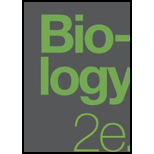 Biology 2eBiologyISBN:9781947172517Author:Matthew Douglas, Jung Choi, Mary Ann ClarkPublisher:OpenStax
Biology 2eBiologyISBN:9781947172517Author:Matthew Douglas, Jung Choi, Mary Ann ClarkPublisher:OpenStax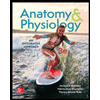 Anatomy & PhysiologyBiologyISBN:9781259398629Author:McKinley, Michael P., O'loughlin, Valerie Dean, Bidle, Theresa StouterPublisher:Mcgraw Hill Education,
Anatomy & PhysiologyBiologyISBN:9781259398629Author:McKinley, Michael P., O'loughlin, Valerie Dean, Bidle, Theresa StouterPublisher:Mcgraw Hill Education,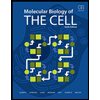 Molecular Biology of the Cell (Sixth Edition)BiologyISBN:9780815344322Author:Bruce Alberts, Alexander D. Johnson, Julian Lewis, David Morgan, Martin Raff, Keith Roberts, Peter WalterPublisher:W. W. Norton & Company
Molecular Biology of the Cell (Sixth Edition)BiologyISBN:9780815344322Author:Bruce Alberts, Alexander D. Johnson, Julian Lewis, David Morgan, Martin Raff, Keith Roberts, Peter WalterPublisher:W. W. Norton & Company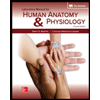 Laboratory Manual For Human Anatomy & PhysiologyBiologyISBN:9781260159363Author:Martin, Terry R., Prentice-craver, CynthiaPublisher:McGraw-Hill Publishing Co.
Laboratory Manual For Human Anatomy & PhysiologyBiologyISBN:9781260159363Author:Martin, Terry R., Prentice-craver, CynthiaPublisher:McGraw-Hill Publishing Co.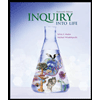 Inquiry Into Life (16th Edition)BiologyISBN:9781260231700Author:Sylvia S. Mader, Michael WindelspechtPublisher:McGraw Hill Education
Inquiry Into Life (16th Edition)BiologyISBN:9781260231700Author:Sylvia S. Mader, Michael WindelspechtPublisher:McGraw Hill Education

Human Anatomy & Physiology (11th Edition)
Biology
ISBN:9780134580999
Author:Elaine N. Marieb, Katja N. Hoehn
Publisher:PEARSON

Biology 2e
Biology
ISBN:9781947172517
Author:Matthew Douglas, Jung Choi, Mary Ann Clark
Publisher:OpenStax

Anatomy & Physiology
Biology
ISBN:9781259398629
Author:McKinley, Michael P., O'loughlin, Valerie Dean, Bidle, Theresa Stouter
Publisher:Mcgraw Hill Education,

Molecular Biology of the Cell (Sixth Edition)
Biology
ISBN:9780815344322
Author:Bruce Alberts, Alexander D. Johnson, Julian Lewis, David Morgan, Martin Raff, Keith Roberts, Peter Walter
Publisher:W. W. Norton & Company

Laboratory Manual For Human Anatomy & Physiology
Biology
ISBN:9781260159363
Author:Martin, Terry R., Prentice-craver, Cynthia
Publisher:McGraw-Hill Publishing Co.

Inquiry Into Life (16th Edition)
Biology
ISBN:9781260231700
Author:Sylvia S. Mader, Michael Windelspecht
Publisher:McGraw Hill Education
Respiratory System; Author: Amoeba Sisters;https://www.youtube.com/watch?v=v_j-LD2YEqg;License: Standard youtube license